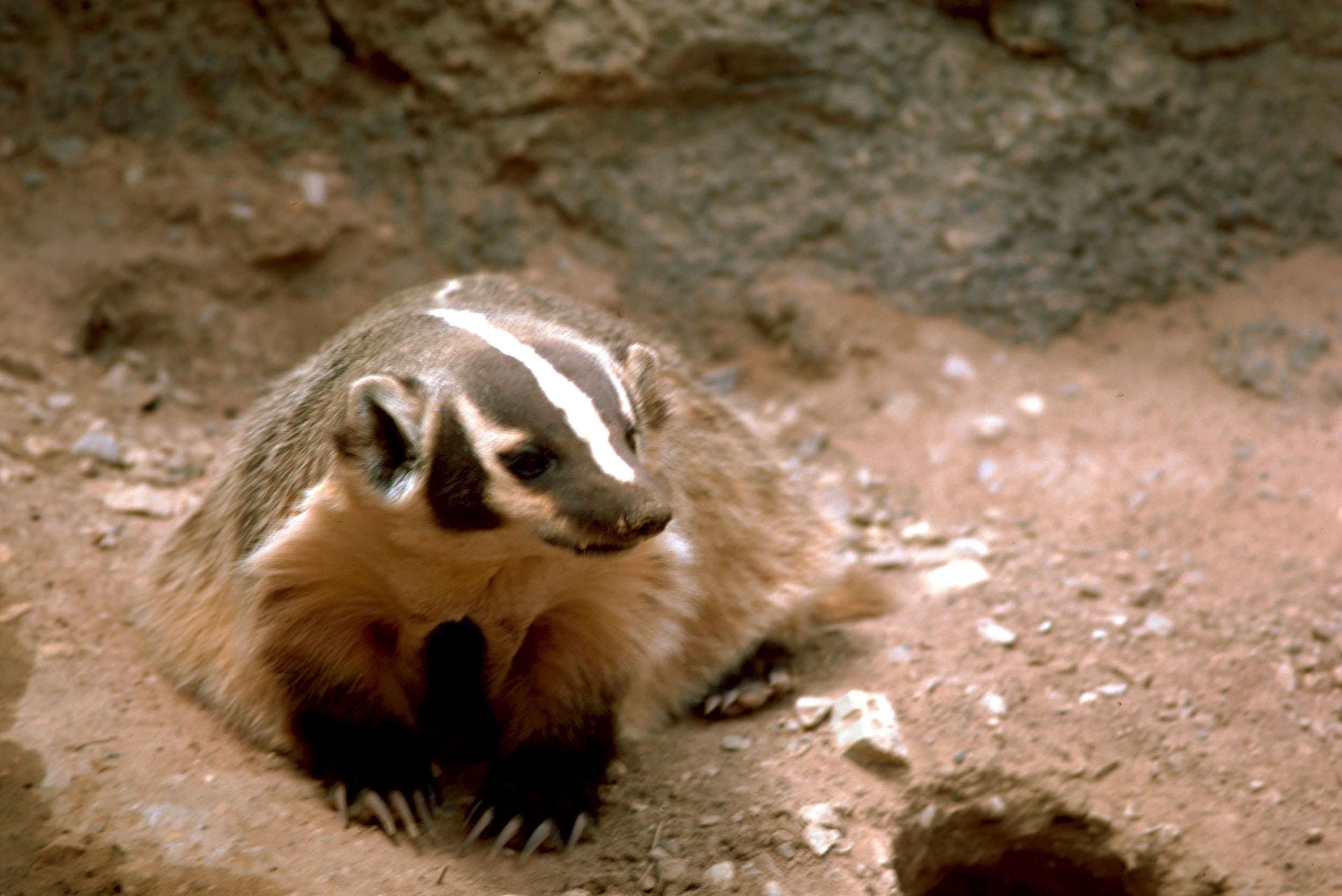Badger: Init +2; Atk bite +0 melee (1d3); AC 9; HD 1d5+3; MV
20’ or burrow 5'; Act 1d20; SP rage, low-light vision, excellent sense of smell;
SV Fort +3, Ref +0, Will +1; AL N.
Dire Badger:
Giant Badger:
Badgers are stout burrowing mammals, about 22 to 35 inches in length, with fierce dispositions. They are either encountered as solitary males (called “boars”) or family groups (called “cetes”). Dire badgers are up to twice the size of their normal kin, and giant badgers up to four times the size.
When a badger is injured, it flies into
a rage, gaining a +2 bonus to Initiative rolls (and re-rolling Initiative order), and a bonus to attacks and
damage based upon its type: for
normal badgers, it is +4, for dire badgers, it is +6, and for giant badgers it
is +8.
Badgers can see well in limited light, and they can burrow through soil or loose rock (but not through solid stone).
Although badgers are not evil, they do not typically love humans. Some men have been known to capture them for sport, making them fight bears or dogs in large pits. They will, therefore, sometimes work with Chaotic faeries to bring about the downfall of those who wander too close to their dwellings.


No comments:
Post a Comment